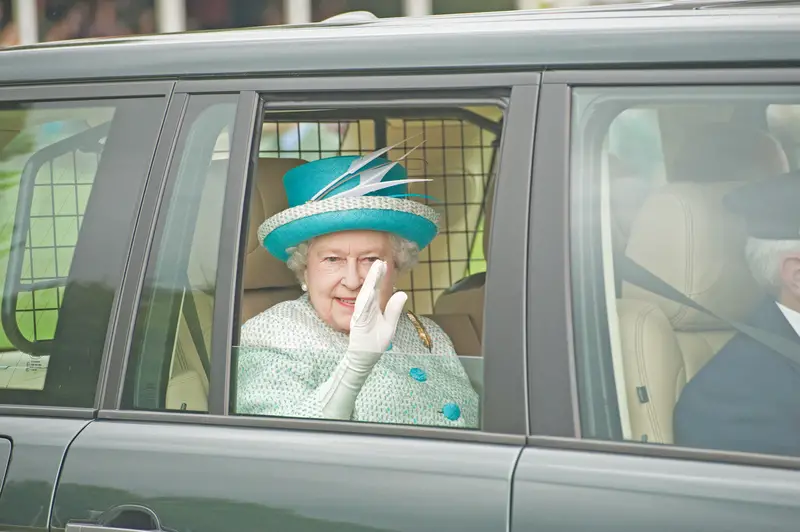When Queen Elizabeth II passed away on September 8, 2022, the world mourned the loss of Britain’s longest-reigning monarch. But what really happened during her final days at Balmoral Castle? Recent revelations from palace insiders, government officials, and royal biographers paint a surprisingly intimate picture of a carefully orchestrated yet deeply personal farewell. From secret health battles to family rushing to Scotland, these details reveal the human side of history’s most documented royal death.
She chose Scotland for her final goodbye
Queen Elizabeth II deliberately decided to spend her final days at Balmoral Castle in Scotland, despite knowing her health was declining. According to King Charles III’s recent speech at Scottish Parliament, his mother “chose to spend her final days” at the estate she treasured most. Princess Anne later revealed that the family tried to convince the Queen that location shouldn’t factor into her decision-making, but the monarch was determined to die where she felt most at peace.
Balmoral’s intimate setting made it the perfect place for such a private moment in history. Unlike the grand halls of Buckingham Palace or Windsor Castle, the Scottish estate’s private quarters and official offices sit close together. This meant that on the morning of September 8th, almost everyone at Balmoral would have sensed something momentous was happening. The Queen had always found solace in the Scottish Highlands, making it a fitting location for her peaceful departure from this world.
Her death was completely peaceful and painless
Sir Edward Young, the Queen’s private secretary, documented her final moments in a memo that has since become part of the Royal Archives. The document reveals that Queen Elizabeth II “slipped away” in her sleep and “wouldn’t have been aware of anything.” His complete account reads: “Very peaceful. In her sleep. Slipped away. Old age. She wouldn’t have been aware of anything. No pain.” This provides comfort to millions who worried about whether the 96-year-old suffered in her final hours.
The Queen’s death certificate later confirmed that she died simply of “old age” at 3:10 PM on September 8th. Dr. Douglas Glass, her official apothecary in Scotland, pronounced her deceased and later revealed that palace staff had been aware of her declining health for several months. He stated that her passing “was expected and we were quite aware of what was going to happen,” suggesting the Queen’s inner circle had time to prepare for this inevitable moment while keeping her comfortable.
She was battling bone cancer in secret
Former British Prime Minister Boris Johnson made a shocking revelation in his memoir “Unleashed,” claiming he had “known for a year or more” that Queen Elizabeth II “had a form of bone cancer.” This previously undisclosed health battle explains why palace officials and government ministers had been preparing for her death months in advance. The diagnosis remained hidden from the public, allowing the Queen to maintain her dignity while fulfilling her constitutional duties until the very end.
Despite her private health struggle, the Queen continued working until her final days. Just two days before her death, she was photographed appointing Liz Truss as her 15th and final prime minister. Though she leaned heavily on a walking stick, her familiar smile remained in place, showing the incredible strength and dedication that defined her 70-year reign. The fact that she kept her illness private while maintaining her public duties speaks to her unwavering commitment to service.
A mysterious red box waited at her bedside
Royal biographer Robert Hardman revealed that a locked red box containing paperwork was discovered at Queen Elizabeth II’s deathbed shortly after she passed away. The box held two sealed letters – one addressed to then-Prince Charles and another to Sir Edward Young, her private secretary. Nobody knows exactly what the Queen wrote in these final messages, but they represented her last official communications as Britain’s monarch.
The red box also contained the Queen’s final choices for recipients of the Order of Merit, one of Britain’s most prestigious honors recognizing “exceptionally meritorious service” across the Commonwealth. Even in her final hours, Queen Elizabeth II remained focused on recognizing excellence and service in others. This attention to duty until the very end perfectly encapsulates how she approached her entire reign – always putting the monarchy and her people first, even when facing her own mortality.
Charles was picking mushrooms when she died
King Charles III spent his mother’s final morning in an unexpectedly ordinary way – picking mushrooms near Balmoral Castle. According to royal biographer Robert Hardman, Charles had gone out to gather mushrooms and clear his head after spending time with the dying Queen. He and Queen Camilla had spent an hour with her privately before she died, along with Princess Anne, a local minister, and the Queen’s senior dresser who alternated at her bedside.
The future king was driving back to Balmoral when he received the news of his mother’s death. He pulled over his car and was addressed for the first time as “Your Majesty” by the person delivering the news. This moment marked the instant transition of power, transforming a son grieving his mother into Britain’s new monarch. The mundane activity of mushroom picking followed by this world-changing phone call highlights how quickly life can shift from the ordinary to the historic.
The government scrambled to find black clothes
While palace plans for the Queen’s death were meticulous and regularly updated, some practical details caught officials off guard. Prime Minister Liz Truss, who had only been in office for two days, hadn’t even finished unpacking her belongings when she learned the Queen was dying. Truss was still mid-cabinet reshuffle and hadn’t packed all her clothes for the move into Downing Street when the palace began its planned “cascade” system of notifications.
Government aides had to rush to Truss’s Greenwich home to locate appropriate black clothing for the Prime Minister’s announcement of the Queen’s death. This scramble for mourning attire shows how even the most carefully laid plans can overlook simple human needs. When Truss finally stepped up to the podium outside Number 10 at 7:07 PM, wearing the black clothes her staff had managed to find, she declared it “the passing of the second Elizabethan age.”
Parliament sensed something was wrong immediately
The first public hint that something was seriously wrong came in the House of Commons, where Queen Elizabeth II is almost never mentioned during regular proceedings. Prime Minister Liz Truss was listening to Sir Keir Starmer speak when Chancellor Nadhim Zahawi slipped into the chamber, squeezed between other ministers to reach Truss, handed her a note, and quickly left. Members of Parliament immediately picked up on the unusual interruption and began whispering among themselves.
The tension escalated when Labour’s deputy leader Angela Rayner received a note from outside the chamber, which she passed to shadow chancellor Rachel Reeves with a grim expression. The note was written in plain English, with no coded language, simply stating: “The queen is unwell, and Keir needs to leave the chamber as soon as possible to be briefed.” Rayner later said she tried not to be “too dramatic” while recognizing the urgency, creating a moment of visible tension that MPs immediately noticed.
The royal family raced against time
For royal family members not already at Balmoral, the timing became critical as they tried to balance rushing to Scotland without causing public alarm. The Queen’s helicopter left Windsor Castle before 7 AM to collect Prince Charles from Dumfries House in Ayrshire, where he had been staying. He arrived at Balmoral shortly before 10:30 AM, while the Duchess of Cornwall was driven from nearby Birkhall to join him. Princess Anne was already in Scotland for official engagements.
The gravity of the situation became clear to the public when Buckingham Palace announced at 12:50 PM that Prince William, Prince Andrew, Prince Edward, and Sophie were traveling to Scotland. Prince William took the wheel of the car that picked up the other royals from Aberdeen Airport at 3:50 PM – forty minutes after the Queen had already died at 3:10 PM. They arrived at Balmoral at 5:06 PM, more than an hour before the public announcement, giving them time to process the loss privately.
Prince Harry arrived after the world knew
Prince Harry’s separate travel arrangements became a source of speculation and sadness. While his brother and uncles flew together from RAF Northolt at 2:40 PM (originally scheduled for 1:30 PM), Harry traveled alone on a private jet from Luton Airport at around 5:30 PM. He was still in the air when Buckingham Palace announced his grandmother’s death to the world at 6:30 PM, meaning he learned about her passing the same way as millions of strangers.
Harry finally landed at Aberdeen Airport at 6:45 PM and arrived at Balmoral at 7:52 PM, nearly five hours after the Queen had died. Buckingham Palace later denied reports that King Charles or his aides were unable to contact Harry before the public announcement, stating that “the public was only informed after every family member had been informed.” However, the timing suggests Harry received the news while already traveling to Scotland, highlighting the complex family dynamics that persisted even during this tragic moment.
The final days of Queen Elizabeth II reveal a monarch who maintained her grace, duty, and personal preferences until the very end. From choosing to spend her last moments in beloved Scotland to keeping her illness private while continuing to serve, she orchestrated her farewell with the same careful attention she brought to her entire reign. These intimate details remind us that even the most public figures face their final chapter as humans first, surrounded by family and the places they love most.

